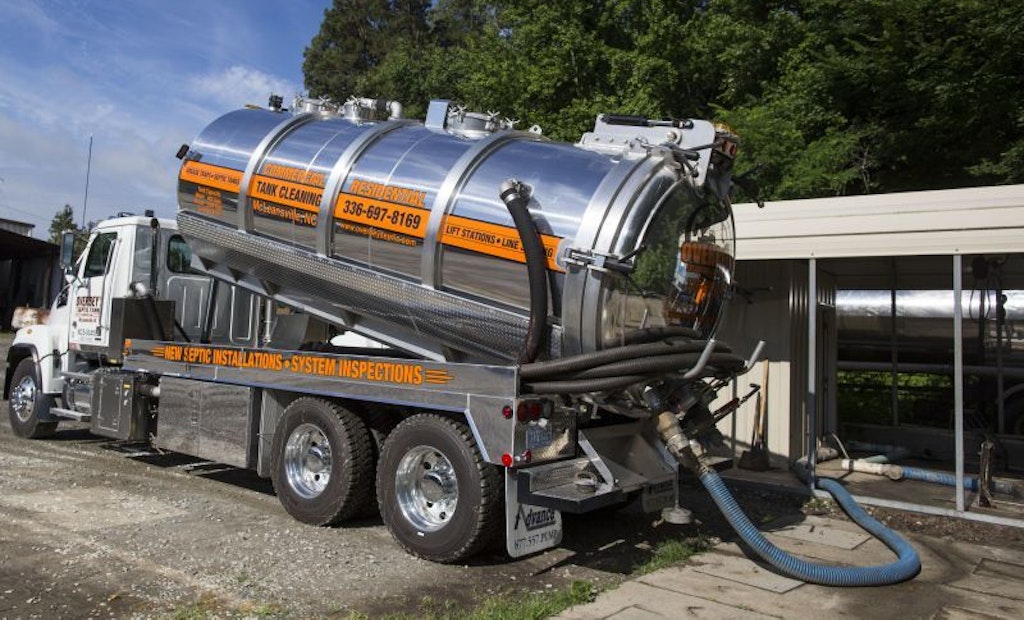Interested in Trucks?
Get Trucks articles, news and videos right in your inbox! Sign up now.
Trucks + Get AlertsBack in the mid-1940s when Bob Overbey started his company, Overbey’s Septic Tank Service in McLeansville, North Carolina, it was primarily a septic pumping business. But over the years the company was asked to do other types of pumping, as well. By the 1990s, about half their work was grease trap maintenance. And from time to time, they’d also be asked to pump drier solid waste.
“We may go into something that’s got floor drains where there’s a lot of grit and dirt, or tanks with dirt in them or concrete basins with stuff that’s come off a belt,” says Bob’s son, Ronnie Overbey, the current owner along with his sister Delores McMasters.
That resulted in a buildup of dirt in their vacuum tanks. In the past, Overbey says they’d have the unpleasant job of crawling into a tank through a 20-inch manhole and shoveling it out by hand. By 1989 he’d had enough of that. When he bought his next vacuum truck he ordered it with a three-stage hydraulic hoist assembly. Now all they have to do is hoist the tank up, open the full-opening rear door and the muck slides right out. Overbey never purchased another truck without a hoist.
Today, the fleet includes a 1993 International with a 3,000-gallon steel tank from Lely Manufacturing; a 2007 International with a 3,600-gallon waste/400-gallon freshwater aluminum tank, also from Lely; a 2009 Kenworth with a 4,500-gallon steel tank from Amthor International; and a 2017 Western Star built out by Advance Pump & Equipment with a 3,800-gallon waste/400-gallon freshwater aluminum tank.
The 1993 International has a rotary vane pump, but to handle the toughest jobs he’s now using blowers — a Robuschi RB‑DV 65 on the 2007 and NVE 4310s on the other two. “They’ll just pump thicker stuff,” he says. “They’re more powerful. Dirt, whatever — you can pump it, where the other one can’t.” His blowers run at 930 cfm.
Instead of dreading those types of projects, the company now advertises for them. “It opened us up for different types of work,” Overbey says. “Now we can go out and pump just about anything solid.”
Being able to empty a tank in this way is also considerably faster and less labor-intensive, he adds. “And it keeps everything clean and safe.”
Read more about Overbey’s Septic Tank Service in this month’s issue of Pumper magazine.






